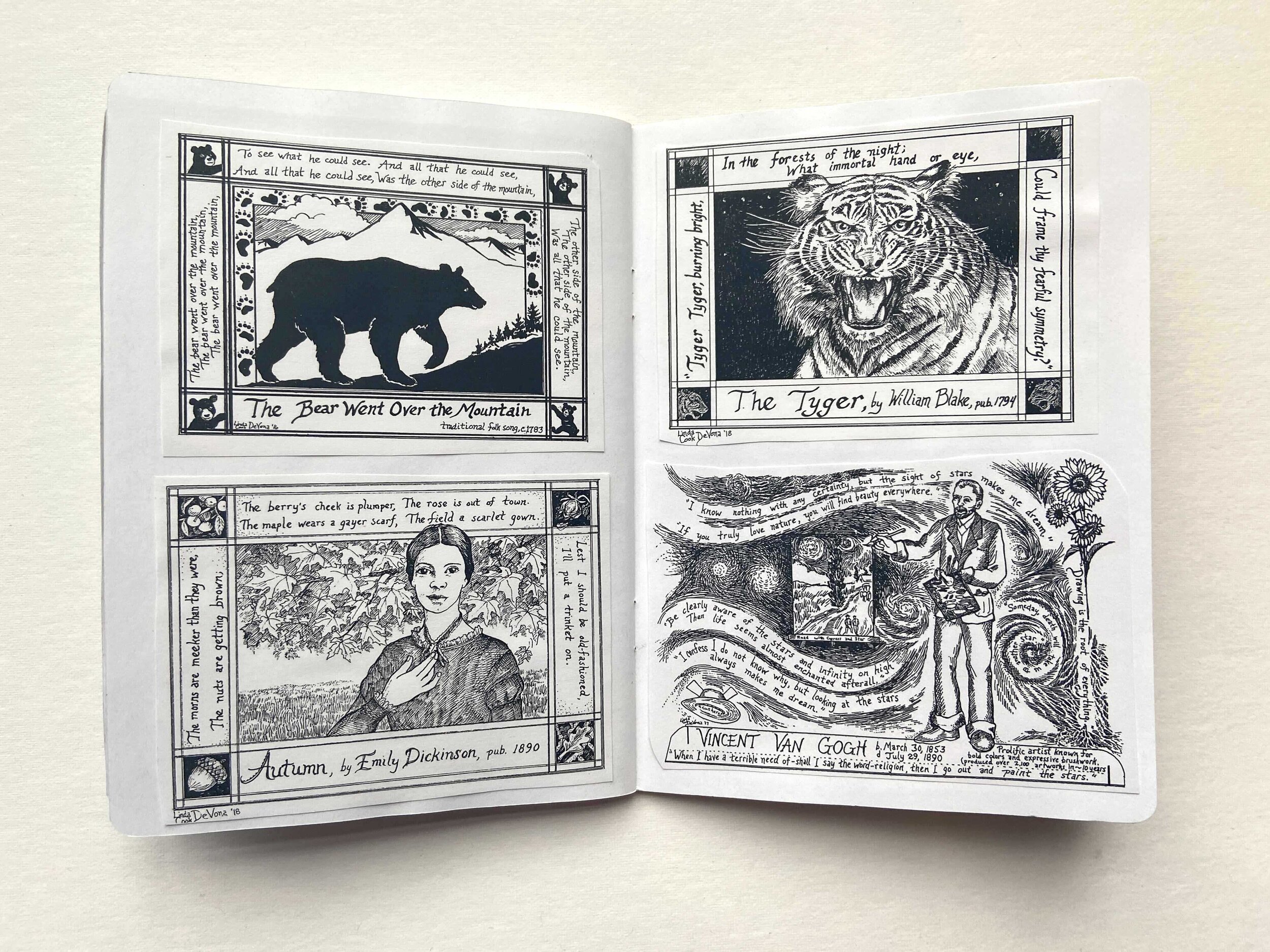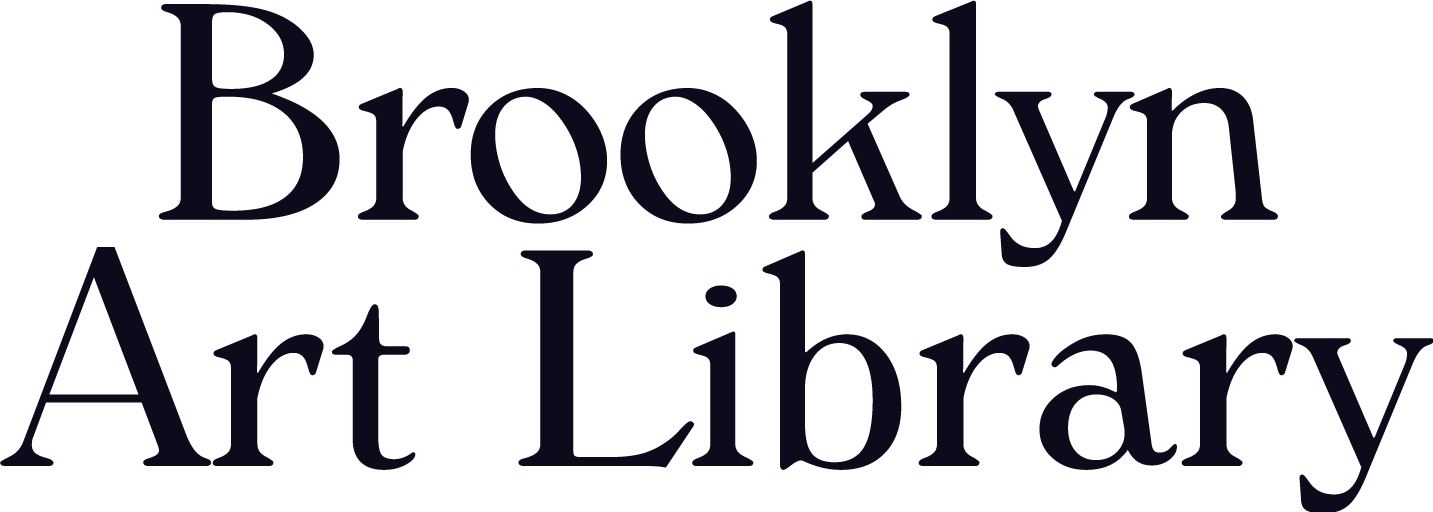Sketchbook Feature: Linda Cook DeVona





Linda Cook DeVona is an illustrator and painter based in Afton, New York. With a sharp eye for the smallest of details, DeVona is known for her wonderful images of life in rural upstate New York and New England. Covered bridges, local flora and fauna, and natural splendors such as lakes and valleys are rendered through delicate pen-and-ink linework, punctuated with seasonal pops of seasonal color from changing leaves to springtime blooms. DeVona shares her work through her company, Farmhouse Greetings, a name taken from the Greek Revival home her family has resided in since the early 20th century. You view Linda’s other Sketchbook Project contribution, “Philadelphia Day Trip,” in our Digital Library.







Your Volume 14 sketchbook, “Farmhouse Greetings,” contains intricate pen and ink drawings reminiscent of old almanacs and etchings. What was your process like in completing this sketchbook, especially since it’s such a marvelous medley of pastoral imagery?
In compiling my sketchbook, I tried to show a bit of a chronological timeline starting with our home my Grandfather McKee bought around 1915 (I never met him, but am ever grateful for his decision). I showed many different angles of it during different seasons and with scenes of my three children, Jim, Rachel and Joe at home on the steps, cross-country skiing in the side-yard, swinging from at front yard maple tree or skating on the frozen Susquehanna. Flowers fill the pages also, since every autumn, without fail, I plant more daffodils, a welcome sight in spring after a long winter. You’ll see other themes that are important to me such as water, scenes from my favorite Lily Lake Trail at Chenango Valley State Park, pastimes, poetry, a nod to cooking and baking, and my own versions of illustrations for favorite classic books such as Wind In The Willows.
In your description, you note that you began selling your illustrations through your business, Farmhouse Greetings, in 1985. How has your approach to making art, especially when you distribute your images as postcards and prints, changed over the years?
I’ve always drawn and, in high school, I started creating individual calendars for friends and acquaintances by drawing with India ink and a steel-nib pen. I’d draw long into the evenings after my homework was done.
I did a whole series of cow-themed oil paintings in college (mid 1970s) and carved linoleum blocks just for fun in my spare time. When I had children, I put away my messy oils and started creating pen-and-ink drawings using a ‘rapidograph,’ a technical drawing pen that would clog often and was hard to clean. I’ve since discovered Staedtler pens which are my favorite drawing pens to date.
I started selling linoleum-printed cards at art shows after getting frustrated trying to sell larger paintings and waiting long periods of time between sales. I started having my drawings printed at offset printers to sell as notecards, before the advent of personal computers and email, when people wrote a lot more. Nowadays, I print my notecards and calendars at home on a laser printer. Thanks to Etsy, I can sell my cards now online and, thanks to the pandemic, people seem to be writing to each other more.
When did you first begin making art?
I’ve been drawing my whole life: at my babysitter’s to combat boredom, on the bottom of my parents’ letters to my older brother in college (before I could write), in the margins of school papers, at my babysitting jobs as a teen to entertain kids (lots of trucks and princesses).
Your work centers around rural life, from nostalgic images of family to renderings of landscapes. Where do you find inspiration for this imagery? Were these motifs and themes always present in your creative practice?
Everything is inspiration. Drawing is my way of documenting life, a way to capture meaningful moments. There’s way too many things to draw. I draw and paint what I care about—family, nature, wildlife, stories. It’s an ongoing portrait of my interests from beautiful old cars, passing trains, flowers, children. Drawing, painting, and even carving is a way to process and control one’s world, a way to get lost in time, a form of meditation.
What does your studio space look like at the moment?
My drawing studio is a T.V. tray in the corner of the living room by the wood stove. That’s why my art is small scale! My painting studio is in an extremely small, cluttered and unheated room upstairs. When it gets too cold to paint, I work on a new series of 12 drawings for next year’s calendar, which will also be reduced and made into notecards.





Are there any artists or creatives, who shaped your artistic development?
I was enchanted by the Swedish illustrator Carl Larsson, the landscape painter Neil Welliver, and woodblock artist Mary Azarian. Of course, I love Vincent Van Gogh and many others, too!
My personal mentors and friends were a pair of elderly sisters who lived near Chenango Valley State Park: Esther Brooks, a retired English teacher-turned-painter and Ruth Zerbst, a clay sculptress who created wonderful birds and animals and fired them in her kiln. They created art into their nineties. Esther hosted an informal, weekly painting group in her basement for many years, which my mother attended for many years. I was lucky enough to join them whenever I was home on vacation from college. Listening to Ruth play classical piano upstairs while the women painted and gabbed downstairs was wonderful. The sessions always ended in great potluck lunches, too.
When running a business and contributing illustrations to publications like GreenPrints, it can be hard to make time to pursue personal projects. How do you find the balance?
It’s hard to find a balance. I drew because of some internal driving force that governed me. It was by no means successful financially, but it was spiritually satisfying. Luckily, my husband worked at the local school and that enabled me to draw and be a stay-at-home mom. We pinched pennies, but we were overall satisfied. I’m starting to paint again for my own pleasure and experimentation without thought of grades or deadlines for commissions. I hope to do a State Park series. I’m painting scenes around our home. I’ve started doing some block carvings again, and I am amazed at the easy-to-carve pink blocks (instead of hard linoleum). I’m starting to learn to say no to the commission requests I don’t have it in my heart to do.
How do you overcome creative blocks?
I rarely get creative blocks, but I do feel that big clock ticking overhead. It seems to be getting louder.
Do you have any advice for budding artists who want to turn their illustrations into their livelihood?
Just keep creating. Don’t be afraid of making mistakes. Practice, have patience and persistence. Don’t expect to become an overnight success and don’t compare your progress with anyone else’s. Create because you feel that inner drive to do so, and, if you don’t feel that drive, don’t despair. It may hibernate for a while until you’re ready.
How can people support your work?
People can browse my Etsy shop or, if they enjoy gardening, they can subscribe to the quarterly gardening magazine GreenPrints. It showcases the human side of gardening through stories and illustrations (I’m just one of many contributing illustrators).
